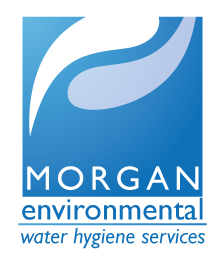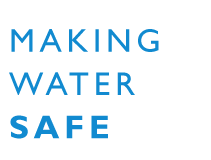The disease was first identified following a large outbreak of pneumonia among people who attended an American Legion Convention in Philadelphia in 1976. A previously unrecognised bacterium was isolated from lung tissue samples which was subsequently named Legionella pneumophila.
It is normally contracted by inhaling Legionella bacteria, either in tiny droplets of water (aerosols), or in droplet nuclei (the particles left after the water has evaporated) contaminated with legionella, deep into the lungs. There is evidence that the disease may also be contracted by inhaling legionella bacteria following ingestion of contaminated water by susceptible individuals. Person to person spread of the disease has not been documented. Initial symptoms of Legionnaires’ disease include high fever, chills, headache and muscle pain. Patient may develop a dry cough and most suffer difficulty with breathing. About one third of patients infected also develop diarrhoea or vomiting and about half become confused or delirious. Legionnaires’ disease can be treated effectively with appropriate antibiotics.
The incubation period is between 2-10 days (usually 3-6 days). Not everyone exposed will develop symptoms of the disease and those that do not develop the ‘full blown’ disease may only present with a mild flu-like infection.
Infection with legionella bacteria can be fatal in approximately 12% of reported cases. This rate can be higher in a more susceptible population; for example, immunosuppressed patients or those with underlying disease. Certain groups of people are known to be higher at risk of contracting Legionnaires’ disease; for example, men appear more susceptible than women, as do those over 45 years of age, smokers, alcoholics, diabetics and those with cancer or chronic respiratory or kidney disease.
On average, there are approximately 200-250 reported cases with approximately 12% fatalities.
The Health and Safety Commission announced in April 1989 its intention to take statutory action to strengthen existing legislation and guidance on the control of Legionnaires' disease. The Approved Code of Practice (ACoP) 'The prevention or control of Legionellosis (including legionnaires’ disease)' associated with the Health and Safety Executive Guideline HS(G)70 - The control of Legionellosis including Legionnaires' Disease was approved by the Secretary of State for Employment on 10 April 1991 and became effective on 15 January 1992. It has since been amended in 1995 to include where applicable, references to the COSHH regulations (Rev. 1994) and place greater emphasis on the need for regular Risk Assessment reviews.
HS(G)70 itself has since been revised and published as a second addition in 1993 in order to cover the development of new control technologies and practical considerations arising after publication of the first edition.
This was replaced by the L8 document which came into effect on 8 January 2001 and this was subsequently replaced by the new Approved Code of Practice and Technical Guidance HSG 274 documents Part 1; The control of legionella bacteria in evaporative systems; Part 2: The control of legionella bacteria in hot and cold water systems (This section is interim guidance only as the consultation process will not be completed until 2014) and Part 3: The control of legionella bacteria in other risk systems were published in November 2013.
The ACoP applies whenever water is stored or used in a way that may create a reasonably foreseeable risk of Legionellosis. In particular it applies to the following plants:
Cooling tower systems; Evaporative condensers; Hot and cold water systems non-domestic premises; Hot and cold water systems where the occupants are particularly susceptible. (i.e. Health/Care Premises); Humidifiers and air washers, spa baths and pools; Other plant and systems containing water which is likely to exceed 20C and which may release a spray or aerosol (i.e. a cloud of droplets and/or droplet nuclei) during operation or when being maintained. Whilst this is not an exhaustive list, it does identify those systems which are most likely to cause infection. Consideration should also be given to other systems, which can release spray or aerosol during operation, maintenance and testing.
It is therefore vital that you determine what the risks of exposure are and how these risks can be reduced or prevented. A high quality legionella risk assessment will do this and will provide a full management program to ensure you can comply with the law.



